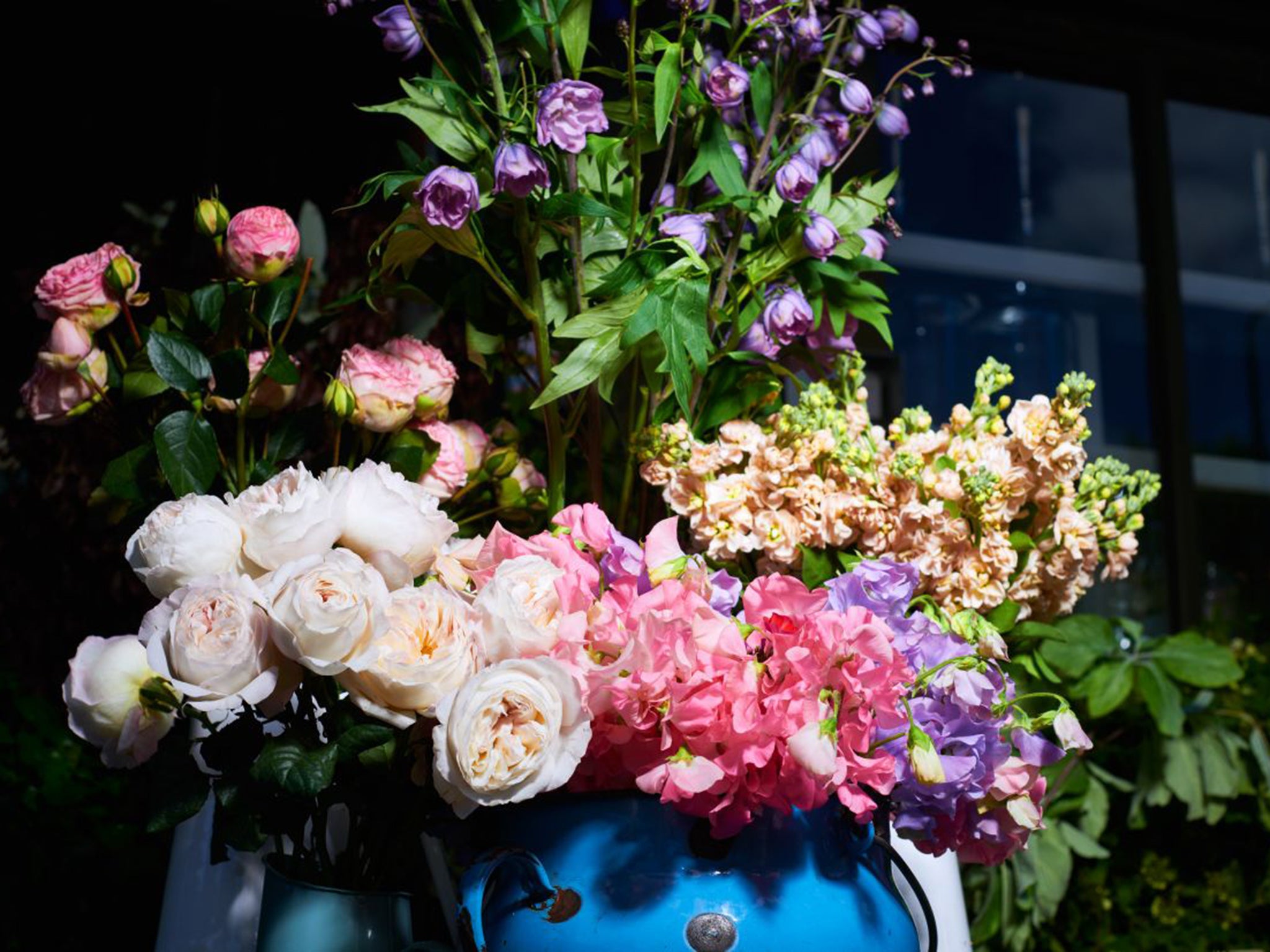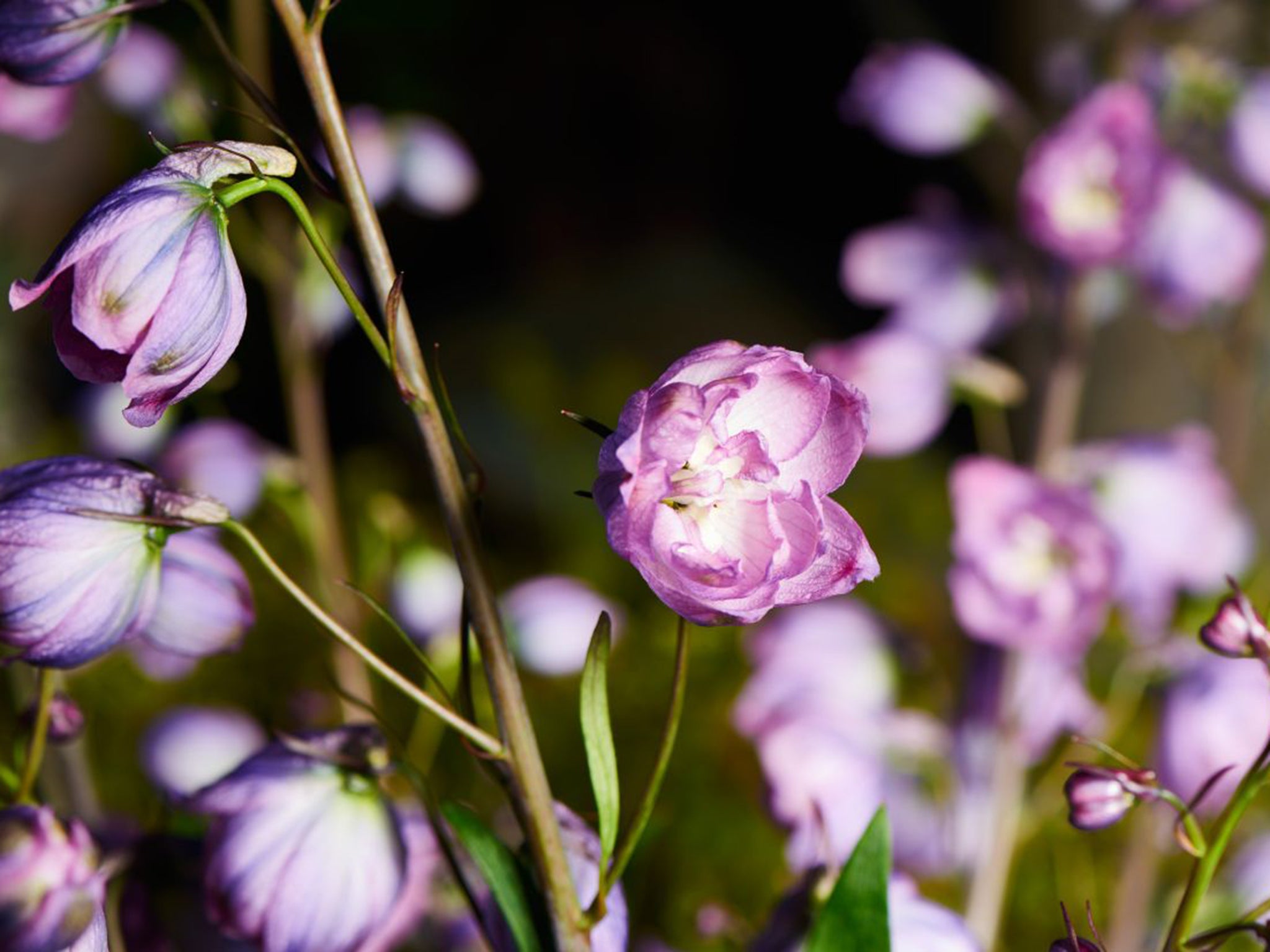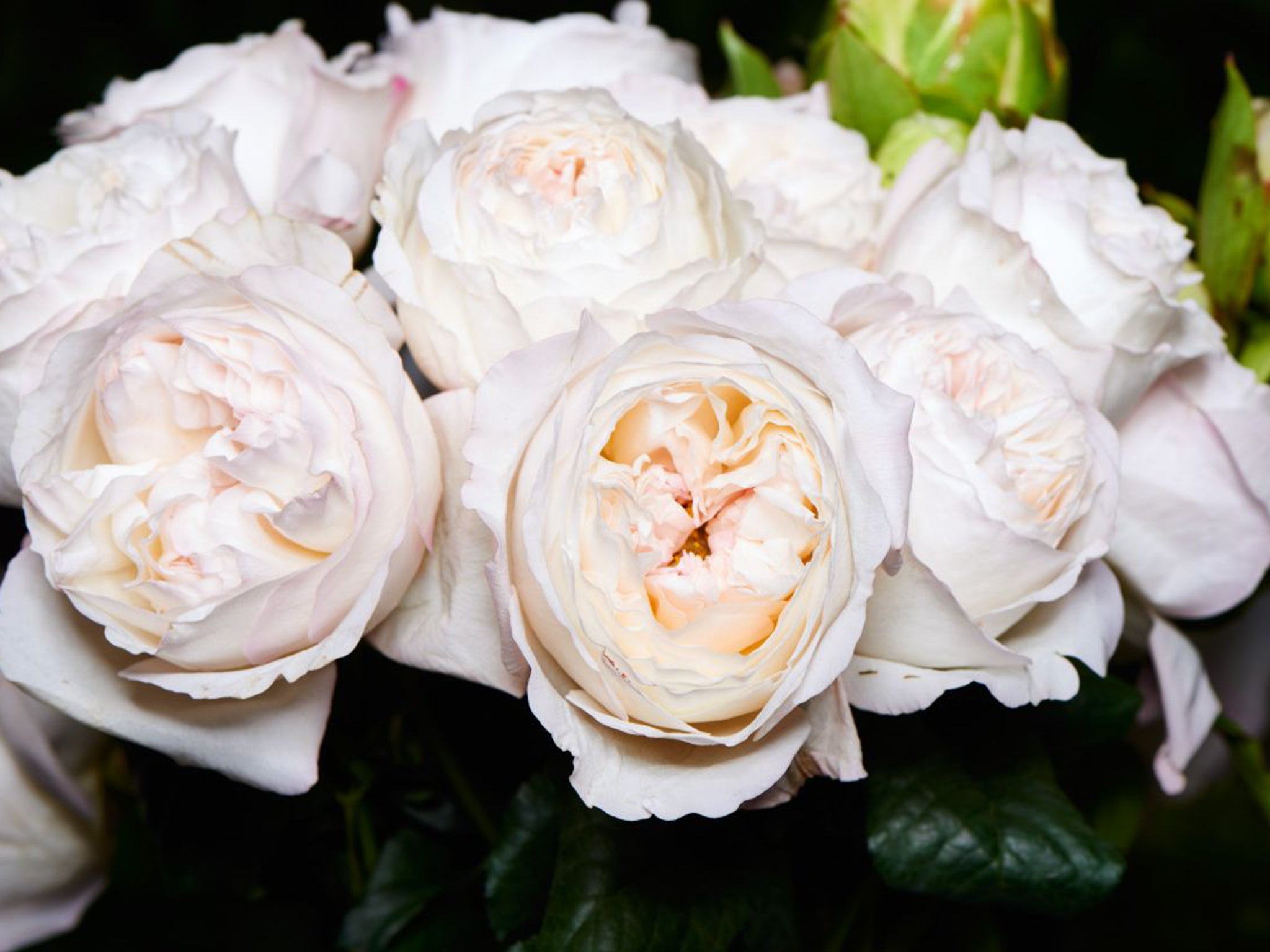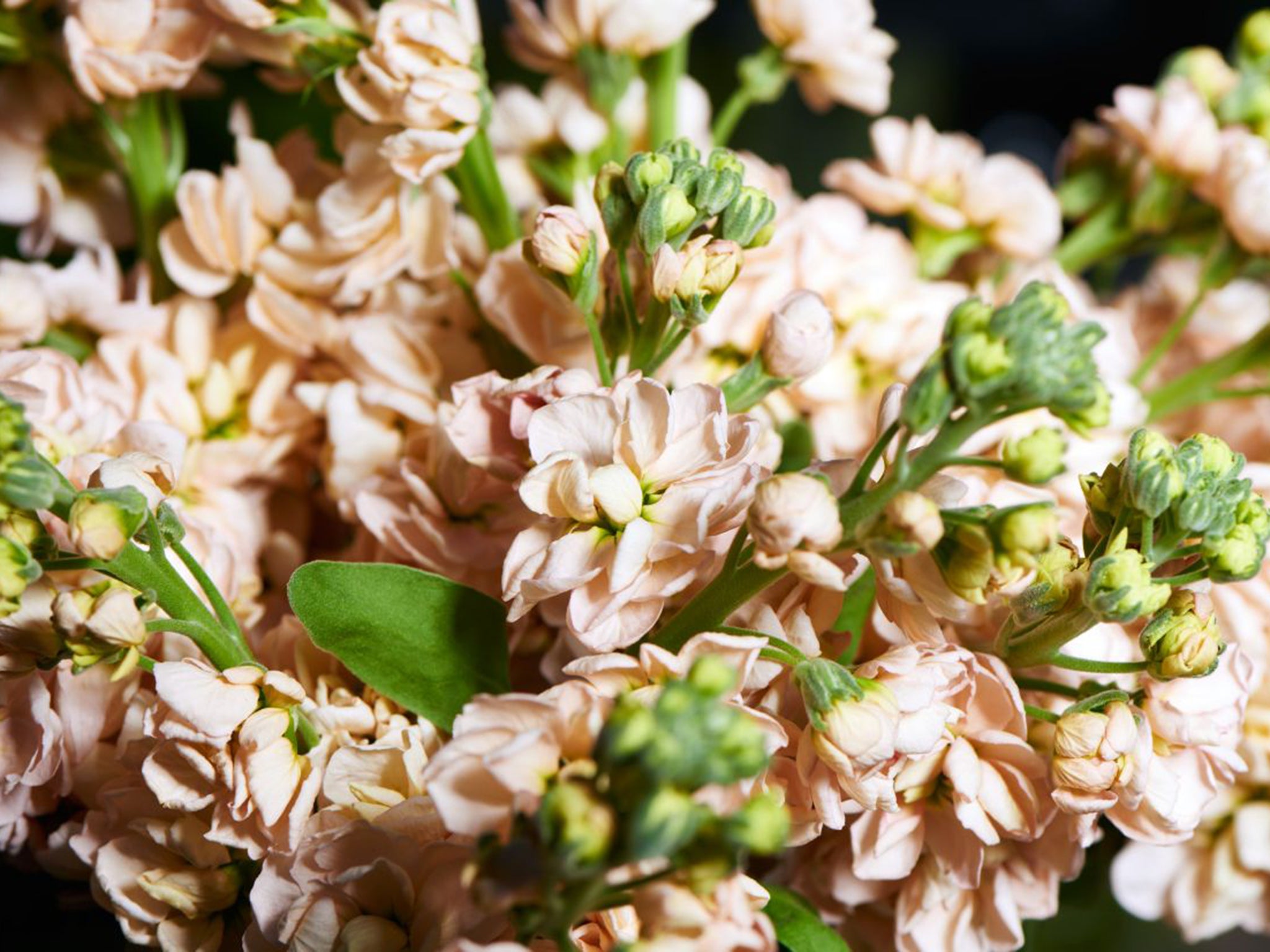From roses to pretty sweet peas, growers join forces to bring native flora to UK florists
Karen Attwood scents a very ethical revival

Your support helps us to tell the story
From reproductive rights to climate change to Big Tech, The Independent is on the ground when the story is developing. Whether it's investigating the financials of Elon Musk's pro-Trump PAC or producing our latest documentary, 'The A Word', which shines a light on the American women fighting for reproductive rights, we know how important it is to parse out the facts from the messaging.
At such a critical moment in US history, we need reporters on the ground. Your donation allows us to keep sending journalists to speak to both sides of the story.
The Independent is trusted by Americans across the entire political spectrum. And unlike many other quality news outlets, we choose not to lock Americans out of our reporting and analysis with paywalls. We believe quality journalism should be available to everyone, paid for by those who can afford it.
Your support makes all the difference.British flowers are blooming. Demand for home-grown favourites such as peonies, stocks and hyacinths is soaring thanks to consumers’ desire for locally sourced goods and a trend towards less formal wedding arrangements.
FloraBritain, a group of 14 growers in Lincolnshire and Norfolk who have joined forces to sell and supply British flowers to florists across the UK, launched last week. Next month, the third annual British Flowers Week, an event set up by New Covent Garden Flower Market, will fly the flag at events held around the UK.
Tracey Griffin, a florist and co-founder of FloriSmart, an online marketplace supplying flowers mainly sourced from Dutch exporters, helped to set up FloraBritain. “We realised that there was a huge void for florists who wanted to get their hands on British flowers,” she told The Independent on Sunday. “There were so few routes to get the flowers to the florists. Now, there will be all these different varieties in one place. Florists will be able to fill their boots as they’ve never done before.”

The supermarkets currently have a 60 per cent share of the cut-flower market, according to Mintel, with 70 per cent of customers buying flowers as a gift rather than for themselves. FloraBritain says that the majority of the 750 million British flower stems grown each year are sold in supermarkets.
Marks & Spencer says sales of home-grown flowers are up 10 per cent on last year, and it expects to sell more than 150 million British stems from more than 45 growers this year.
The retailer will celebrate the revival of British flowers and plants with a garden called Blooms of the British Isles at the RHS Chelsea Flower Show, which opens this week.
“Britain’s passion for flowers goes back centuries, but since the 1960s home-grown blooms have fallen out of favour as the nation opted for more exotic varieties,” said M&S flower expert Simon Richards. “But events such as the Olympics, the Royal wedding and the birth of Prince George and now Princess Charlotte of Cambridge have ignited a new sense of national pride.”
Waitrose, which has also long championed British flowers, says sales are up 22 per cent compared with the same time last year.
“British flowers are not only beautiful to look at, but they also provide seasonal scents that remind shoppers of an English country garden,” says Waitrose flower buyer Allison Burdett.
“Daffodils are the most popular British flower at Waitrose; we love them because they signal the arrival of spring, adding a welcome splash of yellow across the UK.”
Liz Anderson, of New Covent Garden Market, said the trend towards British flowers was part of the move towards more sustainable, ethical food. “It ties in with the Slow Food movement: there is now an international Slow Flowers movement,” she said. “But vintage weddings are also in fashion now so it is also about style.”
Vic Brotherson, the florist to the fashion set and owner of London florist Scarlet & Violet, who created the very British flower arrangements for Kate Moss’s wedding, agreed that customers “want to feel good” by purchasing indigenous blooms.
“They feel it’s the right thing to do,” she said. “They feel they are home-grown. Especially in the city, it’s nice to have the feeling they are handpicked and not super-grown.”

But because her business is so busy, it is not possible to use British flowers exclusively.
“It’s difficult to have them only supplied by British growers, so we have to beef them up to make it feel more seasonal and gardeny,” she says. “It’s really hard from October to March as there’s nothing apart from foliage. There is not a long-lasting supply and it’s not as guaranteed. The Dutch have an extraordinary way with growing flowers that have given us high quality. People now have such high expectations; they expect flowers to last.”
Jane Macfarlane Duckworth from the Flower Union, a collective of British growers within 50 miles of London, which set up last year, said: “People are becoming more aware of the flower industry as a whole and how they are transported, and becoming increasingly aware of the different options available in the UK. They don’t need flowers from further afield as there is a huge range available in Britain.”

Best of British
Garden roses: Romantic, blowsy flowers with delicious, evocative scents. Hand a person a rose and they will automatically put it to their nose close to smell it. Mass-produced roses often lack perfume.
Sweet peas: A soft, papery texture coupled with a delicate, fruity fragrance belies a tough, resilient nature. Florists say British-grown sweet peas are the best – for quality, scents and a long flowering season.
Delphiniums: Many flower heads are carried on long, elegant stems, and colours range from rich, deep blue to hot pinks and pure white. Lighter on fragrance, but heavy on drama.
Sweet Williams: Part of the Dianthus family, they have been a popular British garden plant since the 16th century. The palette ranges from pure white to rich, dark reds.
Stocks: One of the most widely grown British cut flowers; the tall stocks – in white, cream, pink, red, yellow, lilac and purple – have a strong, spicy, sweet clove scent that can fill a room.
Source: New Covent Garden Market
Join our commenting forum
Join thought-provoking conversations, follow other Independent readers and see their replies
Comments